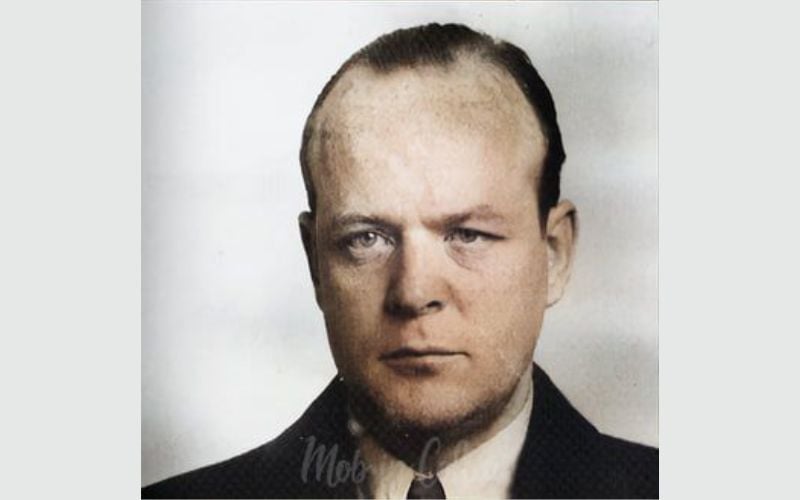On April 3, the long-awaited mini-series The Kennedys will air on cable TV.
Starring the likes of Greg Kinnear and Mrs. Tom Cruise, Katie Holmes, the mini-series was famously dropped from another cable channel a few months back. Rumors swirled that members of the Kennedy clam were displeased by its depiction of Jack and Bobby and the patriarch, Joseph P. Kennedy.
Well, the mini-series will finally air beginning April 3 on something called Reelz. This may turn out to be much ado about…well, not very much. Most of us, like it or not, already know much more about the Kennedys than we want to know.
But this is an opportunity to recall a more or less forgotten episode in the history of the Kennedy clan. Not many people know that the mythic era of early 1960s Camelot might have been over just one month before it began thanks to an anti-Catholic nut with a violent streak named Richard Pavlick.
So much attention is paid to the Kennedy assassination of November 1963 that it is easy to forget that in December of 1960 -- just weeks after JFK won his historic election over Richard Nixon -- Pavlick tried to kill Kennedy in Florida.
The failed JFK assassination attempt has been given fresh attention by veteran TV journalist Jeff Greenfield, who has just written a fascinating little book called Then Everything Changed: Stunning Alternate Histories of American Politics: JFK, RFK, Carter, Ford, Reagan (Putnam).
Greenfield plays the “What if?” game with history, imagining how America would have been different if various scenarios had played out among the most powerful men in the nation’s history.
One of the scenarios Greenfield looks at is the failed attempt to kill JFK in December of 1960. As he described it in a recent article, “On Sunday, December 11, 1960, a retired postal worker named Richard Pavlick, age 73, driven by bigotry against Catholics and contempt for the Kennedys’ wealth and influence, parked outside Kennedy’s Palm Beach home, holding a switch connected to seven sticks of dynamite -- enough, in the words of the Secret Service, to ‘level a small mountain.’”
Greenfield continues, “Only Jacqueline Kennedy’s appearance, to see her husband off to church, kept Pavlick from ramming Kennedy’s car and detonating the explosives. (He was captured four days later by authorities who had been tipped off.)
“The closeness of the call was appalling,” Secret Service chief U.E. Baughman wrote in his memoirs.
This even though an Irish American postal worker from Pavlick’s New Hampshire town had done a great job tipping off authorities to Pavlick’s suspicious behavior.
Thomas Murphy was a postmaster in Belmont, New Hampshire, who started to receive messages from Pavlick after the well-known local kook had left the town. The ominous letters implied that the world would soon know all about Richard Pavlick.
Murphy contacted the authorities, who soon discovered that Pavlick had recently purchased dynamite.
And yet, only fate intervened and prevented the assassination.
It is fascinating to wonder what would have happened to civil rights, Cuba and even Vietnam had the anti-Catholic Pavlick succeeded.
But it is also worthwhile to stop and imagine the hatreds that drove him. It is far too easy to forget these days just how deeply ingrained anti-Catholicism was in American history.
The election of JFK, as many have noted, may very well have been the final obstacle which helped Americans accept members of the Catholic church as full and equal citizens.
Imagine, though, if Kennedy had been killed by a nut driven by those very same hatreds.
At the very least, Catholic Americans -- especially the Irish -- would have taken this hard. They would have felt that they had finally made it to the top of the mountain, only to abruptly be thrown off.
History has more or less forgotten Pavlick. He lived until 1975 in a New Hampshire hospital, where he died at the age of 88.
It is possible that amidst all the sex stories about Marilyn and Bobby and Jack, the Kennedys mini-series will look at this dark, forgotten episode of anti-Catholic history.
It is possible. But not likely.
(Contact “Sidewalks” at [email protected])
Starring the likes of Greg Kinnear and Mrs. Tom Cruise, Katie Holmes, the mini-series was famously dropped from another cable channel a few months back. Rumors swirled that members of the Kennedy clam were displeased by its depiction of Jack and Bobby and the patriarch, Joseph P. Kennedy.
Well, the mini-series will finally air beginning April 3 on something called Reelz. This may turn out to be much ado about…well, not very much. Most of us, like it or not, already know much more about the Kennedys than we want to know.
But this is an opportunity to recall a more or less forgotten episode in the history of the Kennedy clan. Not many people know that the mythic era of early 1960s Camelot might have been over just one month before it began thanks to an anti-Catholic nut with a violent streak named Richard Pavlick.
So much attention is paid to the Kennedy assassination of November 1963 that it is easy to forget that in December of 1960 -- just weeks after JFK won his historic election over Richard Nixon -- Pavlick tried to kill Kennedy in Florida.
The failed JFK assassination attempt has been given fresh attention by veteran TV journalist Jeff Greenfield, who has just written a fascinating little book called Then Everything Changed: Stunning Alternate Histories of American Politics: JFK, RFK, Carter, Ford, Reagan (Putnam).
Greenfield plays the “What if?” game with history, imagining how America would have been different if various scenarios had played out among the most powerful men in the nation’s history.
One of the scenarios Greenfield looks at is the failed attempt to kill JFK in December of 1960. As he described it in a recent article, “On Sunday, December 11, 1960, a retired postal worker named Richard Pavlick, age 73, driven by bigotry against Catholics and contempt for the Kennedys’ wealth and influence, parked outside Kennedy’s Palm Beach home, holding a switch connected to seven sticks of dynamite -- enough, in the words of the Secret Service, to ‘level a small mountain.’”
Greenfield continues, “Only Jacqueline Kennedy’s appearance, to see her husband off to church, kept Pavlick from ramming Kennedy’s car and detonating the explosives. (He was captured four days later by authorities who had been tipped off.)
“The closeness of the call was appalling,” Secret Service chief U.E. Baughman wrote in his memoirs.
This even though an Irish American postal worker from Pavlick’s New Hampshire town had done a great job tipping off authorities to Pavlick’s suspicious behavior.
Thomas Murphy was a postmaster in Belmont, New Hampshire, who started to receive messages from Pavlick after the well-known local kook had left the town. The ominous letters implied that the world would soon know all about Richard Pavlick.
Murphy contacted the authorities, who soon discovered that Pavlick had recently purchased dynamite.
And yet, only fate intervened and prevented the assassination.
It is fascinating to wonder what would have happened to civil rights, Cuba and even Vietnam had the anti-Catholic Pavlick succeeded.
But it is also worthwhile to stop and imagine the hatreds that drove him. It is far too easy to forget these days just how deeply ingrained anti-Catholicism was in American history.
The election of JFK, as many have noted, may very well have been the final obstacle which helped Americans accept members of the Catholic church as full and equal citizens.
Imagine, though, if Kennedy had been killed by a nut driven by those very same hatreds.
At the very least, Catholic Americans -- especially the Irish -- would have taken this hard. They would have felt that they had finally made it to the top of the mountain, only to abruptly be thrown off.
History has more or less forgotten Pavlick. He lived until 1975 in a New Hampshire hospital, where he died at the age of 88.
It is possible that amidst all the sex stories about Marilyn and Bobby and Jack, the Kennedys mini-series will look at this dark, forgotten episode of anti-Catholic history.
It is possible. But not likely.
(Contact “Sidewalks” at [email protected])




Comments